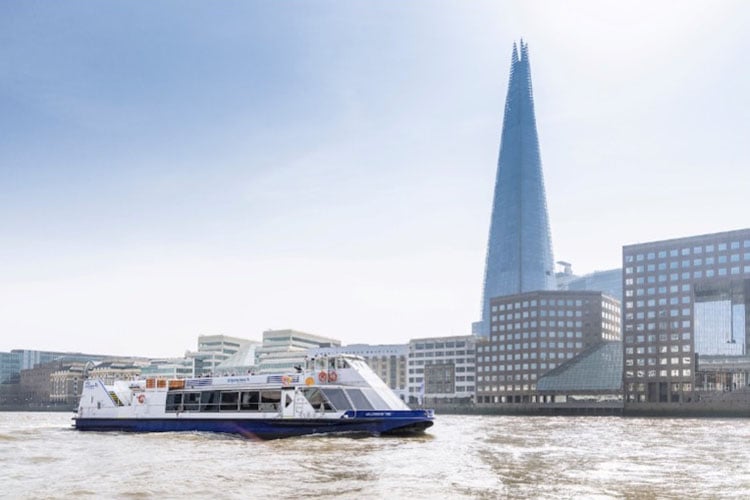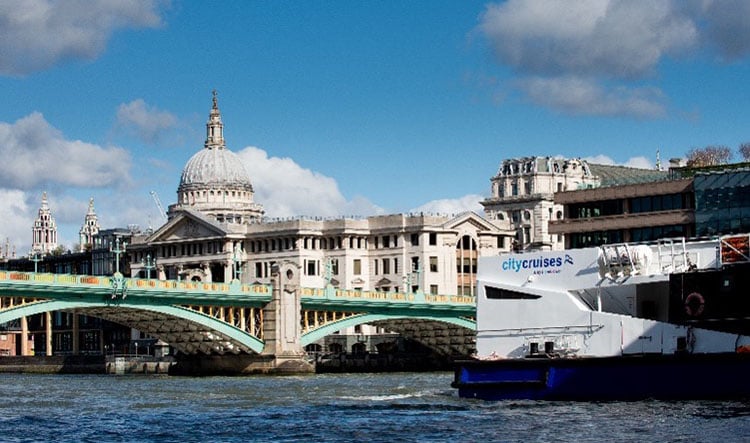London, a city steeped in history and culture, is a treasure trove of architectural wonders. From ancient landmarks to modern marvels, the city offers a diverse array of architectural styles that tell the story of its evolution over centuries. One of the best ways to experience this architectural splendour is by taking a cruise down the Thames. In this blog, we’ll explore some of the most iconic and breath-taking architectural landmarks you can see from the Thames.
La Tour de Londres
Notre voyage commence par l'un des sites les plus célèbres de Londres, la Tour de Londres. Ce château historique, fondé en 1066 par Guillaume le Conquérant, est un spectacle formidable le long de la rivière. Son emblématique tour blanche, symbole de l'architecture militaire normande, se dresse au-dessus de l'eau, tandis que les murs et les tourelles qui l'entourent vous transportent à l'époque médiévale. Le Tower Bridge, chef-d'œuvre de l'ingénierie victorienne, ajoute au charme de la ville et en fait un lieu incontournable.
Le Shard
Entrant dans l'ère moderne, le Shard est un témoignage éclatant de l'architecture contemporaine. Conçu par l'architecte Renzo Piano, ce gratte-ciel revêtu de verre s'élève à une hauteur de 1 016 pieds, ce qui en fait le plus haut bâtiment du Royaume-Uni. Son design futuriste et la vue imprenable qu'il offre depuis sa plate-forme d'observation, The View from The Shard, offrent une perspective unique sur la ligne d'horizon de la ville.

Théâtre du Globe :
Pour les amateurs d'histoire et de littérature, le Globe Theatre est un joyau architectural. Reconstruction fidèle de la salle de théâtre élisabéthaine où étaient jouées les œuvres de William Shakespeare, il se trouve sur la rive sud de la Tamise. Son toit de chaume, sa structure en bois et sa conception en plein air offrent un aperçu authentique du passé théâtral de Londres.

Cathédrale Saint-Paul :
La cathédrale Saint-Paul, chef-d'œuvre de Sir Christopher Wren, est un symbole emblématique de la résilience et de la force spirituelle de Londres. Son magnifique dôme, que l'on peut apercevoir de plusieurs points le long de la Tamise, domine l'horizon de la ville depuis des siècles. L'intérieur est tout aussi impressionnant, avec ses mosaïques complexes et son architecture impressionnante.

London Architecture History
London’s architectural landscape is a tapestry woven through centuries, reflecting the city’s historical depth, cultural shifts, and technological advancements. Its architecture tells the story of London’s evolution from a Roman settlement to a bustling, modern metropolis. The city’s buildings are not just structures; they are historical markers that represent the architectural trends and socio-political contexts of their times.
The history of London architecture begins with the remnants of the Roman Wall, hinting at the city’s ancient origins. Medieval London can still be felt through the Gothic spires of the historic Westminster Abbey, where monarchs have been crowned since 1066. The Great Fire of London in 1666 was a pivotal event that reshaped the city, leading to the emergence of neoclassical architecture under the direction of Sir Christopher Wren, who designed the iconic St. Paul’s Cathedral.
The Victorian era added a layer of industrial strength and Gothic revival aesthetics to London’s skyline, exemplified by the Houses of Parliament and the Tower Bridge. The turn of the 20th century brought Art Deco and modernist movements to the fore, with buildings like the Battersea Power Station adding to the city’s architectural diversity.
Post-World War II reconstruction and subsequent decades saw a mix of brutalist and post-modern structures emerge, such as the Barbican Estate and the Lloyd’s building. The turn of the millennium ushered in an era of high-tech skyscrapers, epitomized by the Shard, the Gherkin (30 St Mary Axe), and the Walkie Talkie (20 Fenchurch Street), which blend cutting-edge engineering with innovative designs that continue to push the boundaries of London’s cityscape.
FAQs on London Architecture (2024)
What architectural styles can be seen in London?
London showcases a diverse range of architectural styles, from medieval Gothic and neoclassical to Victorian, Art Deco, brutalist, post-modern, and contemporary high-tech skyscrapers. This diversity reflects the city’s long history and its continual evolution.
How can I explore London’s architecture?
Exploring London’s architecture can be done through guided walking tours, architectural tours, and museum visits. The city’s layout allows for self-guided exploration, particularly in areas rich in historical buildings like the City of London, Westminster, and along the South Bank.
Can I see London’s architecture from the River Thames?
Yes, one of the best ways to view London’s architectural marvels is from the River Thames. City Cruises offers boat rides that provide unique perspectives of iconic structures such as the Houses of Parliament, St. Paul’s Cathedral, the Shard, and the Tower Bridge, among others. These cruises offer insightful commentary on the buildings’ histories and architectural significance.
What are some must-see architectural landmarks in London?
Must-see architectural landmarks in London include the Tower of London, St. Paul’s Cathedral, the Houses of Parliament, the Shard, the Gherkin, the British Museum, and the Royal Opera House. Each of these buildings offers a glimpse into different architectural eras and styles that have shaped London.
Is it possible to visit the interiors of London’s architectural landmarks?
Many of London’s architectural landmarks are open to the public, offering tours of their interiors. Places like the Houses of Parliament, St. Paul’s Cathedral, and the Tower of London provide guided tours that delve into the buildings’ histories and architectural features. However, some modern skyscrapers may have restrictions on public access to office areas but may offer observation decks or public spaces.
How has modern architecture integrated with historic buildings in London?
Modern architecture in London often incorporates or stands in contrast to historic buildings, creating a dynamic urban landscape. Contemporary structures like the Shard and the Gherkin are designed with sensitivity to their historical context, utilizing materials and forms that both contrast and complement the city’s older architectural fabric. This blend of old and new is a characteristic feature of London’s skyline.
Are there any architectural tours focusing on specific styles or periods?
Yes, London offers a variety of architectural tours focusing on specific styles or periods, ranging from medieval to contemporary architecture. These tours can be area-specific, such as exploring the Gothic revival buildings of the Victorian era, or thematic, like a tour of London’s brutalist structures or modern skyscrapers.


